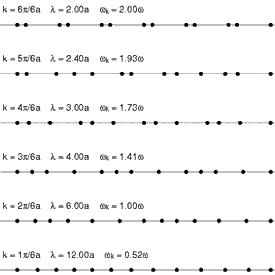Disposable devices used to detect pregnancies, or harmful viruses like HIV, have developed to the point where results are almost 100% accurate. To push the capabilities of these devices even further, a body of research is looking into the use of sound waves to better understand the hormonal, and potentially harmful, activity of molecules in blood and urine.
Frieder Lucklum of the University of Bremen, Germany, is leading a project into the use of sound-controlling phononic crystals that have the potential to transform disposable devices.
In presentation to the the Acoustical Society of America, Lucklum and his colleague Ralf Lucklum at Otto von Guericke University Magdeburg have also suggested 3D printing as a suitable technique for making phononic powered point-of-care devices.

Detection by sound
Phononic crystals are an acoustic metamaterial. When the crystals come into contact with sound waves, they are designed to vibrate in a certain way.
Graphic demonstrating the rate of vibration of phonons within a crystal. Movements are exaggerated to ease viewing, in an actual crystal vibration would be invisible to the naked eye. Graphic by Wikimedia Commons contributor Greg L.
In the case of Lucklum and Lucklum’s research, the crystals have been tuned to detect sound vibrations between molecules in the blood or urine. By collecting this information, the researchers can determine the way molecules in a mixture behave with one another. They are therefore able to detect any abnormalities such as the presence of a HIV, or the hCG hormone produced by a woman in pregnancy.

The ultrasonic advantage
Other devices used to determine the content of liquids like the blood typically work using light or an electrical charge. In some cases this means that the devices are powered by an external source. One advantage of a phononic device is that it would work independently of battery or mains power.
Another significant advantage of phononic crystals is that they are sensitive to the size, shape and water content of molecules, giving a more detailed reading of microscopic activity.
A low-cost accurate device for point-of-care
By incorporating the crystals into a 3D printed device, Lucklum and Lucklum hope to be able make an inexpensive kit that can be used at home or in local and hospital medical screenings. So far, possible designs have been drafted by the collaborators using numerical models, and have been optimized for high-resolution 3D printing.
In a previous project from the University of California Irvine, postgraduate student Chris Lim used 3D printing to make a point-of-care device capable of diagnosing Malaria, Zika, and other infectious diseases. A number of devices have also been developed to work with smartphones and improve the health of patients at home.
For all the latest 3D printing news, subscribe to the most widely read newsletter in the 3D printing industry, follow us on twitter and like us on Facebook.
Featured image: Graphic illustrating the shape of human red and white blood cells. Image via orangesdms.wikispaces




